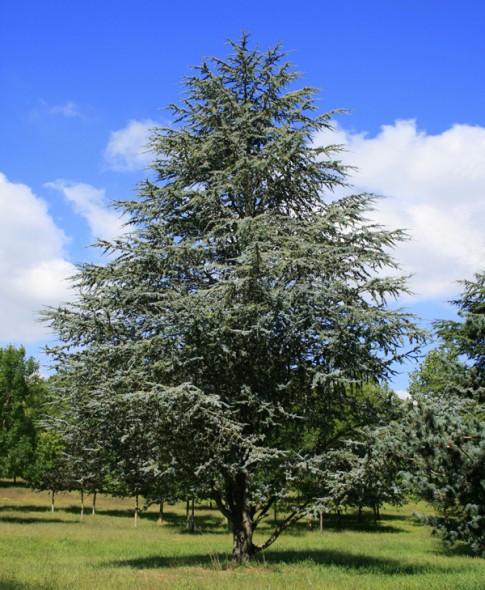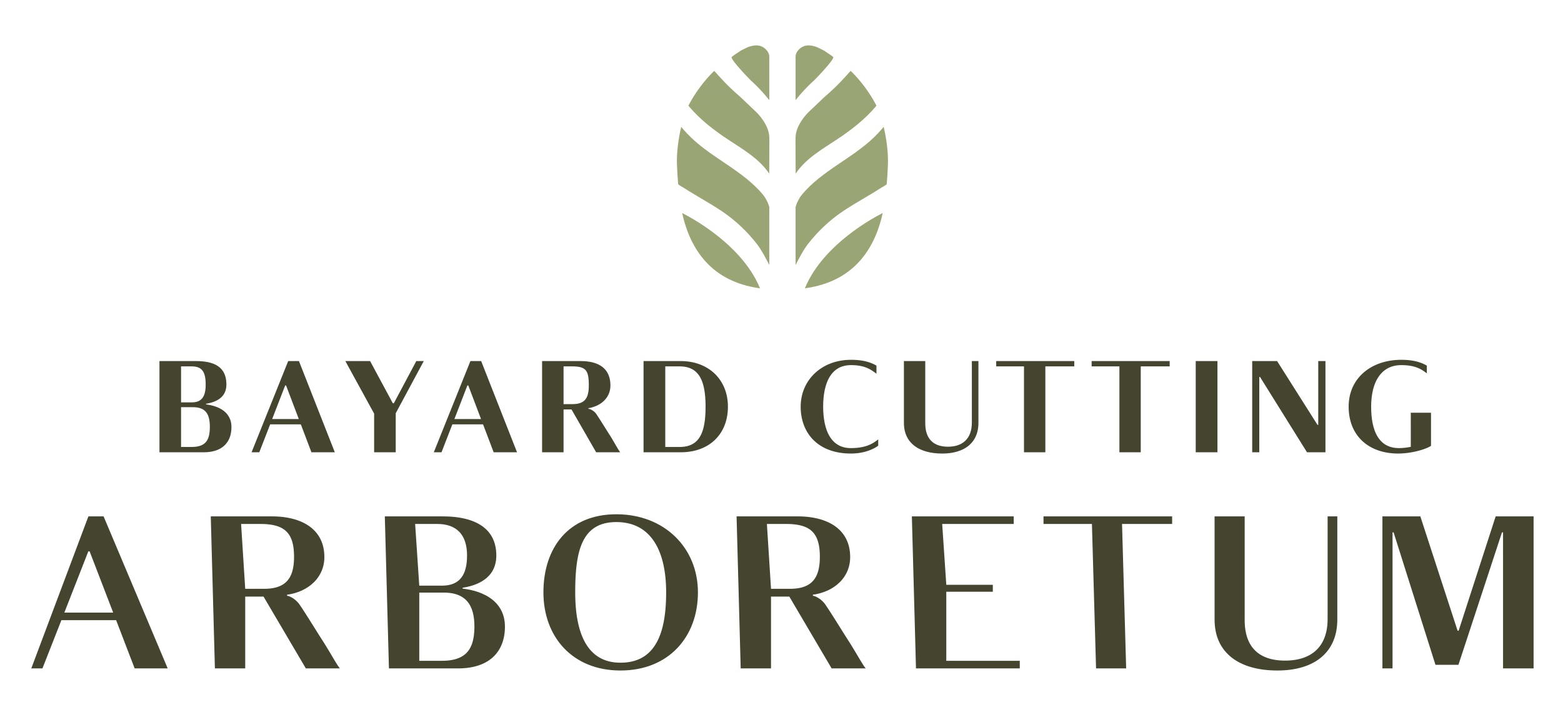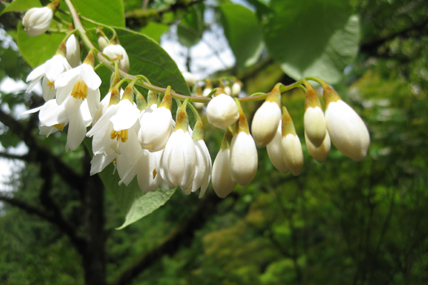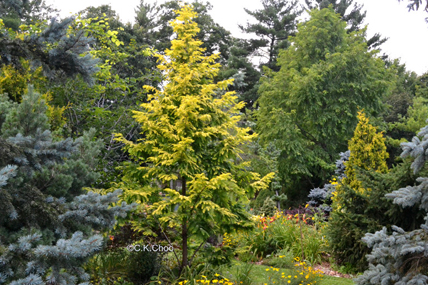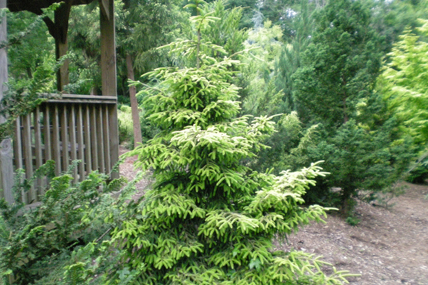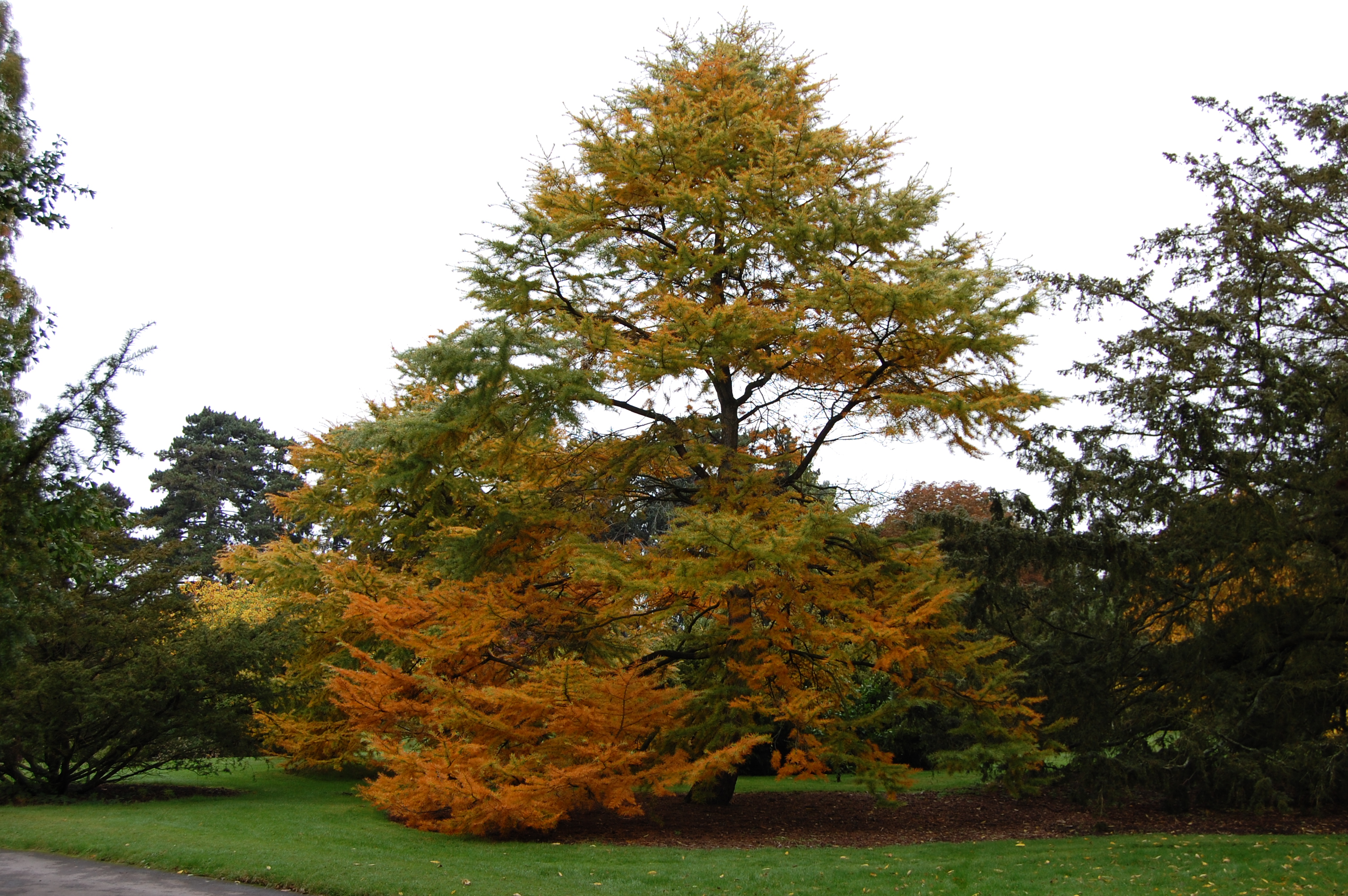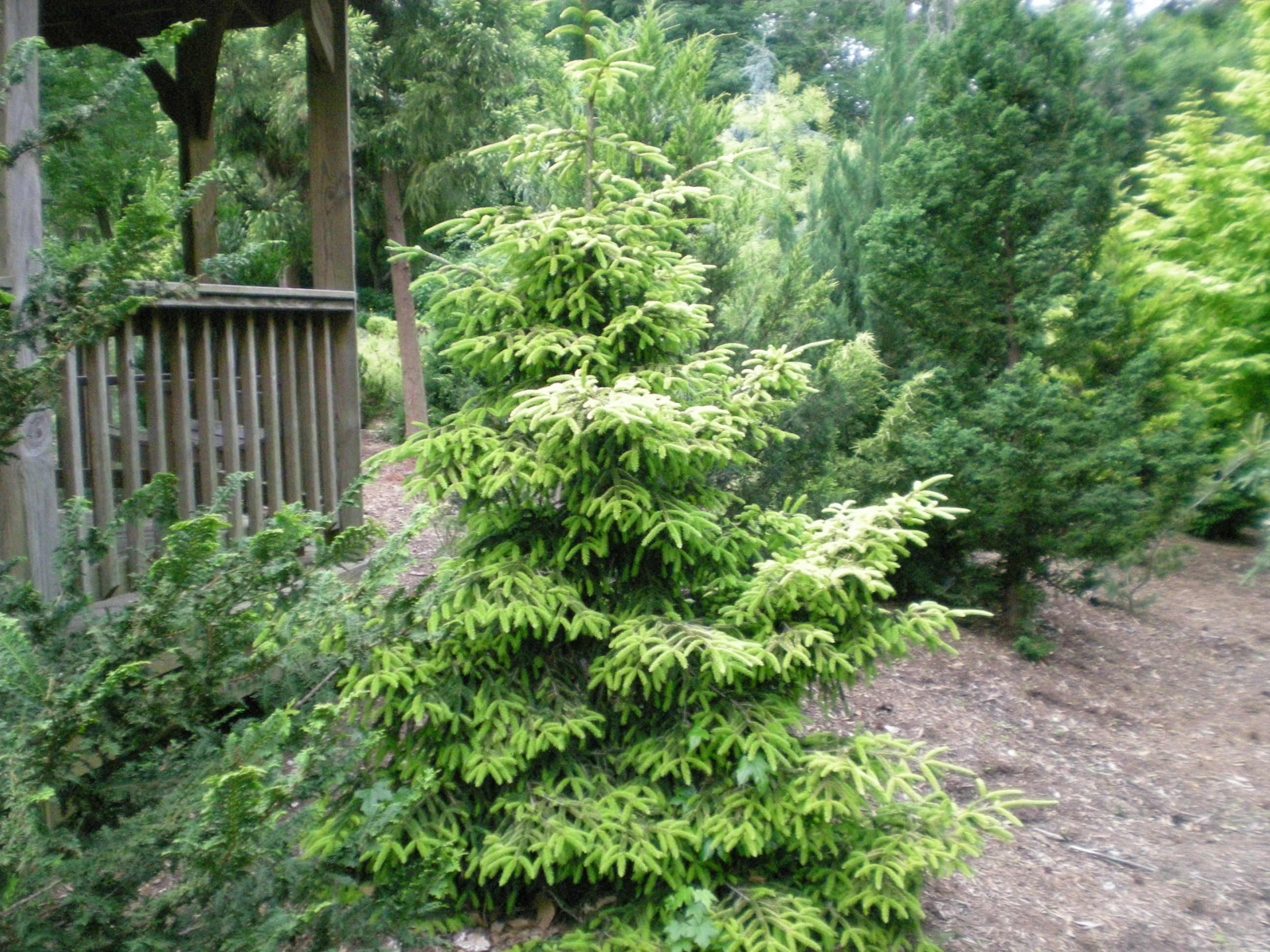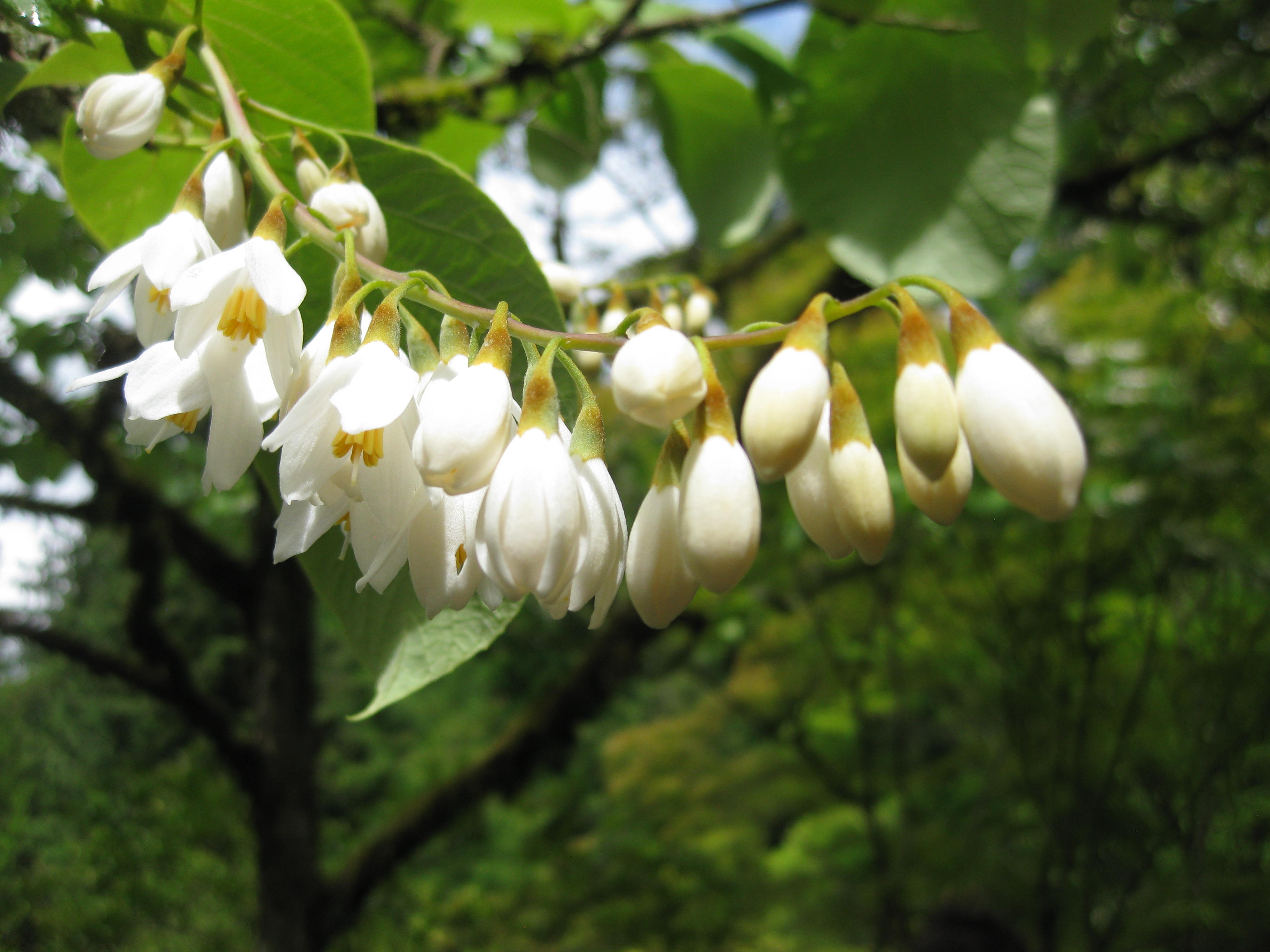GOLDEN DAWN REDWOOD
Metasequoia glyptostroboides 'Gold Rush'

COLLECTION
New Pinetum
FAMILY
Cupressaceae formerly Taxodiaceae
PLANT TYPE
Tree, Deciduous Conifer
ZONE
4-8
CULTURE
Golden Dawn Redwood is a fast growing, deciduous conifer that performs best in moist, deep, well-drained, slightly acidic soils in full sun. It is related to and closely resembles Bald Cypress (Taxodium). It is tolerant of partial shade, but plant in full sun for best golden color results.
NOTEWORTHY CHARACTERISTICS
A fast-growing broadly conical tree with delicate golden foliage. Plants grow slower than other species but still puts on 18 inches of growth annually. Develops large trunks with wide buttresses, bark exfoliates in ribbon-like strips.
PROBLEMS
There are no serious pests but it can be susceptible to canker and Japanese beetle damage and it is on the IUCN Red List of Threatened Species.
GARDEN USES
Serves as an excellent specimen, can also be used in mass plantings.
HISTORY
Species thought to be extinct until discovered in China by T. Kan. Seeds from these trees were collected and distributed to universities and arboretums. Planted in 2011 as a golden accent to the New Pinetum collection.
